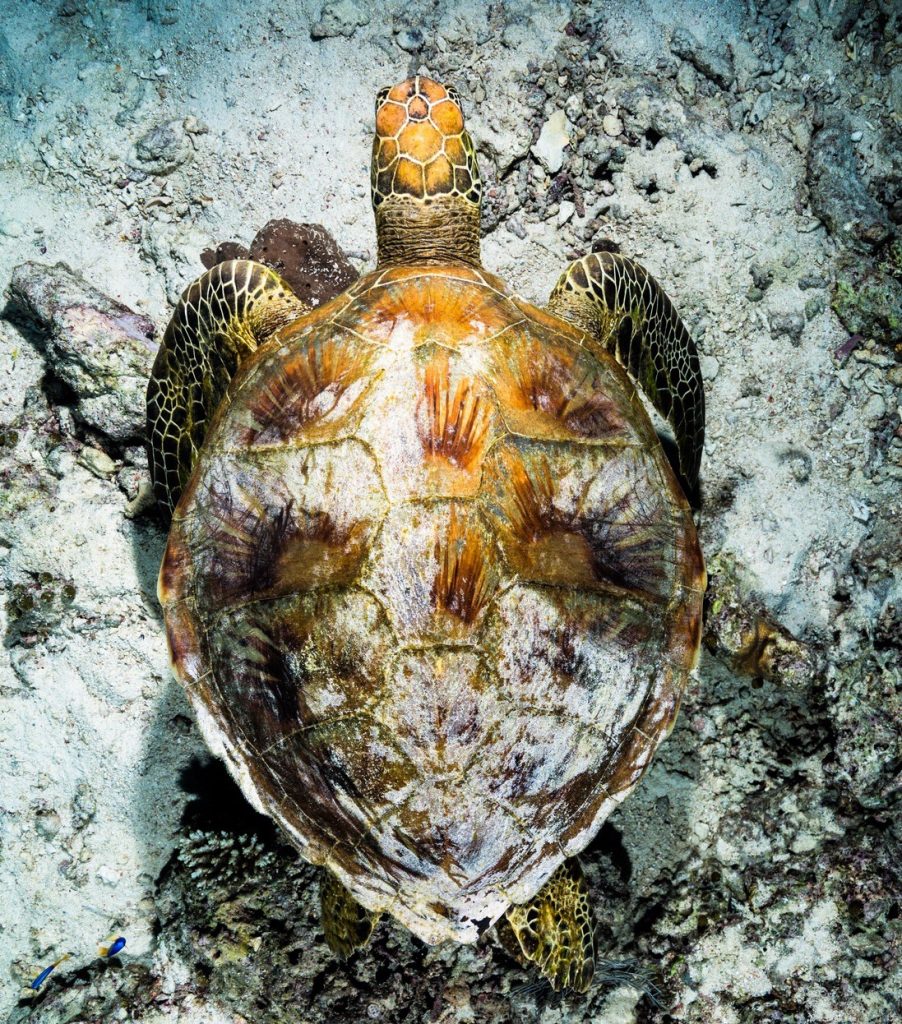by Teresa Teo Guttensohn
Today is World Sea Turtle Day (16 June 2020). As we celebrate Sea Turtles, we remember the magical and fortuitous event which took place at East Coast beach of Singapore just weeks ago on World Turtle Day (23 May 2020). A critically endangered Hawksbill Sea Turtle (Eretmochelys imbricata) came ashore to nest!

Nesting in Broad Daylight
To the amazement of the few out exercising at East Coast Park beach during the COVID-19 lockdown, this Hawksbill Sea Turtle dug into the sand and laid her eggs in broad daylight before safely heading back to sea.
The closed beaches, off-limits to humans for their own good, meant more space, peace and quiet for our native wildlife to do their thing.

PHOTO: Green Sea Turtle (Chelonia mydas) by Kevin Li (IG: @lkevyn)
Flying Foxes Galore
Not long after, another rare phenomenon took place serendipitously on World Environment Day (5 June 2020) – a large colony of about three hundred Flying Foxes (Pteropus sp.) flew into the rainforest of our Central Catchment Nature Reserve.

PHOTO: Teresa Teo Guttensohn
Biggest Bats
With faces that resemble foxes and with a wingspan of about one metre, they are among the biggest bats in the world.

PHOTO: Courtesy of Sabrina Jabbar, who first sighted them on 5 June 2020.
Mega-bats Under Threat
Flying Foxes are found in parts of Asia, Africa, Australia and some oceanic islands in the Indian and Pacific Oceans. They can fly long distances to forage for food. In Singapore, resident colonies of the native Large Flying Fox (Pteropus vampyrus) have long been extirpated. Many species of Flying Foxes are threatened by hunting, habitat loss and deforestation.

GIF: Teresa Teo Guttensohn
Time to Turn the Tide for Nature
As we witness more of such phenomenon, and with one million species believed to be facing extinction, will our children and our children’s children be able to see nature’s wonders as we now still have the privilege to enjoy?
If we all act decisively now, there is still time to turn the tide for Nature and ourselves!
“The food we eat, the air we breathe, the water we drink and the climate that makes our planet habitable, all come from nature. Yet, these are exceptional times in which nature is sending us a message: To care for ourselves, we must care for nature.
It is time to wake up. To take notice. To raise our voices. It’s time to build back better for People and Planet. This World Environment Day, it’s Time for Nature.”
THE UNITED Nations

PHOTO: Kevin Li (IG: @lkevyn)
Turtle Hatchery
To help save Singapore’s population of sea turtles, a protected turtle hatchery located in Sisters’ Islands Marine Park was launched in September 2018.
What can you do? To contribute to turtle conservation, volunteer with the ‘Biodiversity Beach Patrol’ by NParks to patrol beaches at night during the nesting season.

